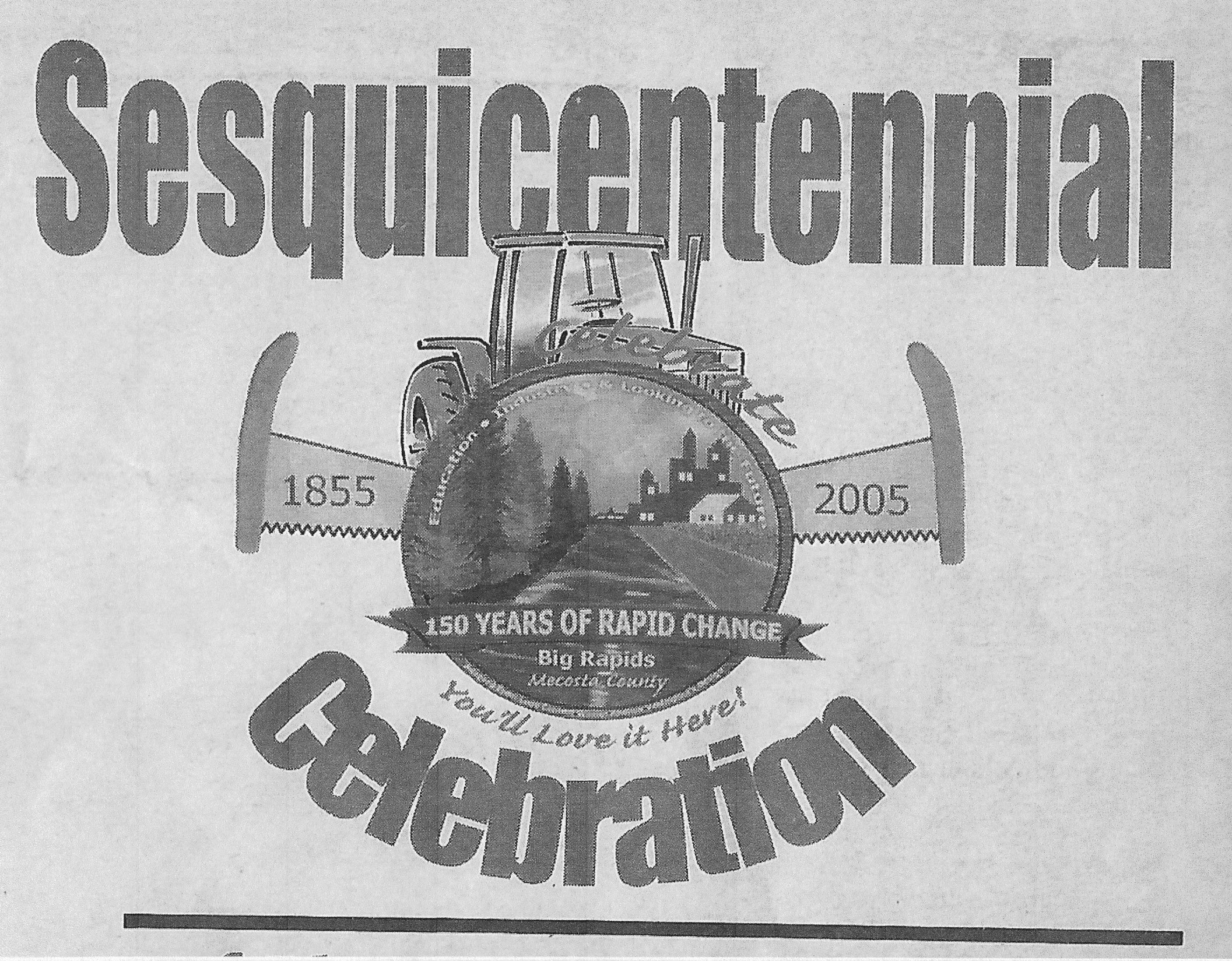
Part III - Culture, a supplement to the Big Rapids Pioneer Newspaper. Used with permission.
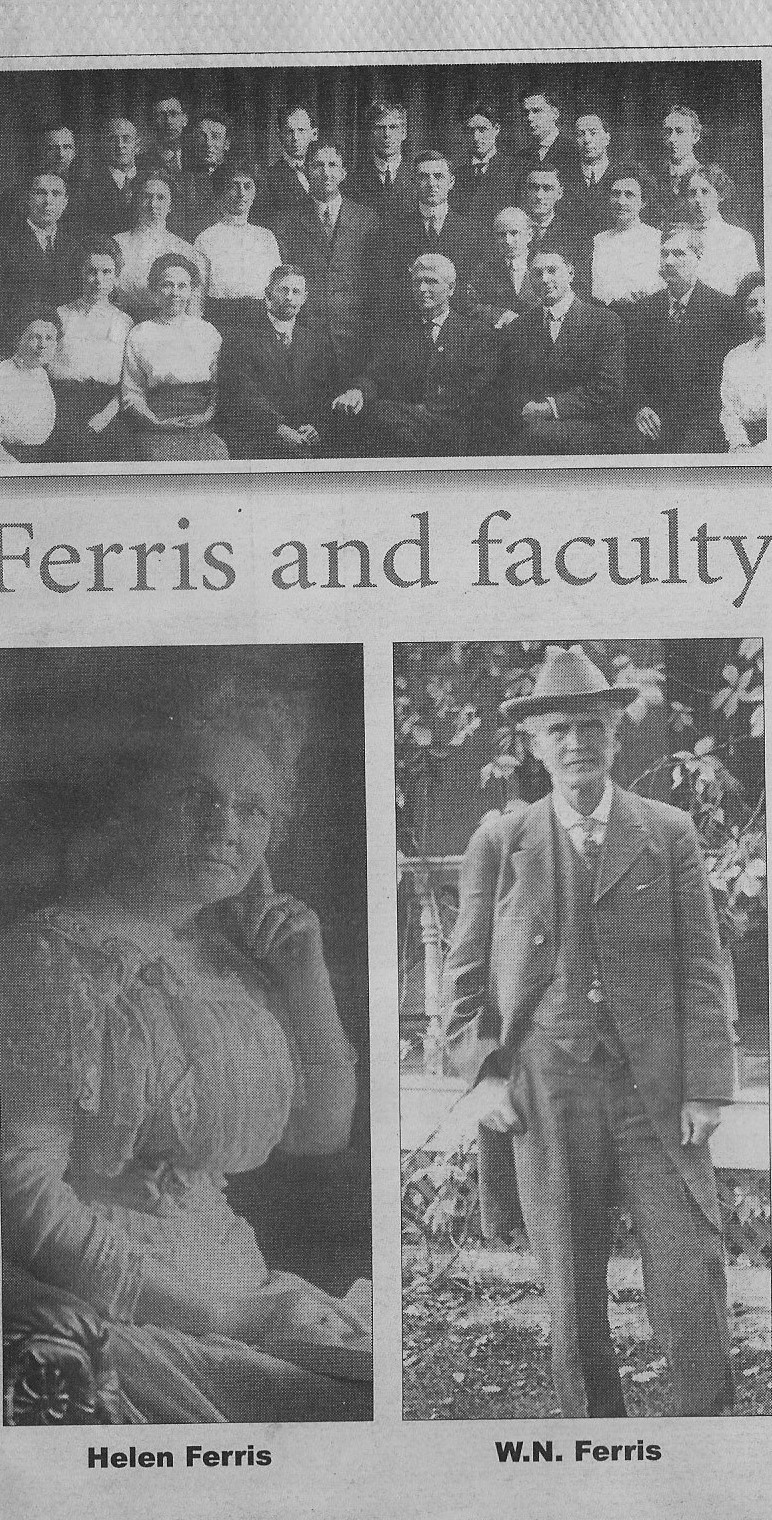
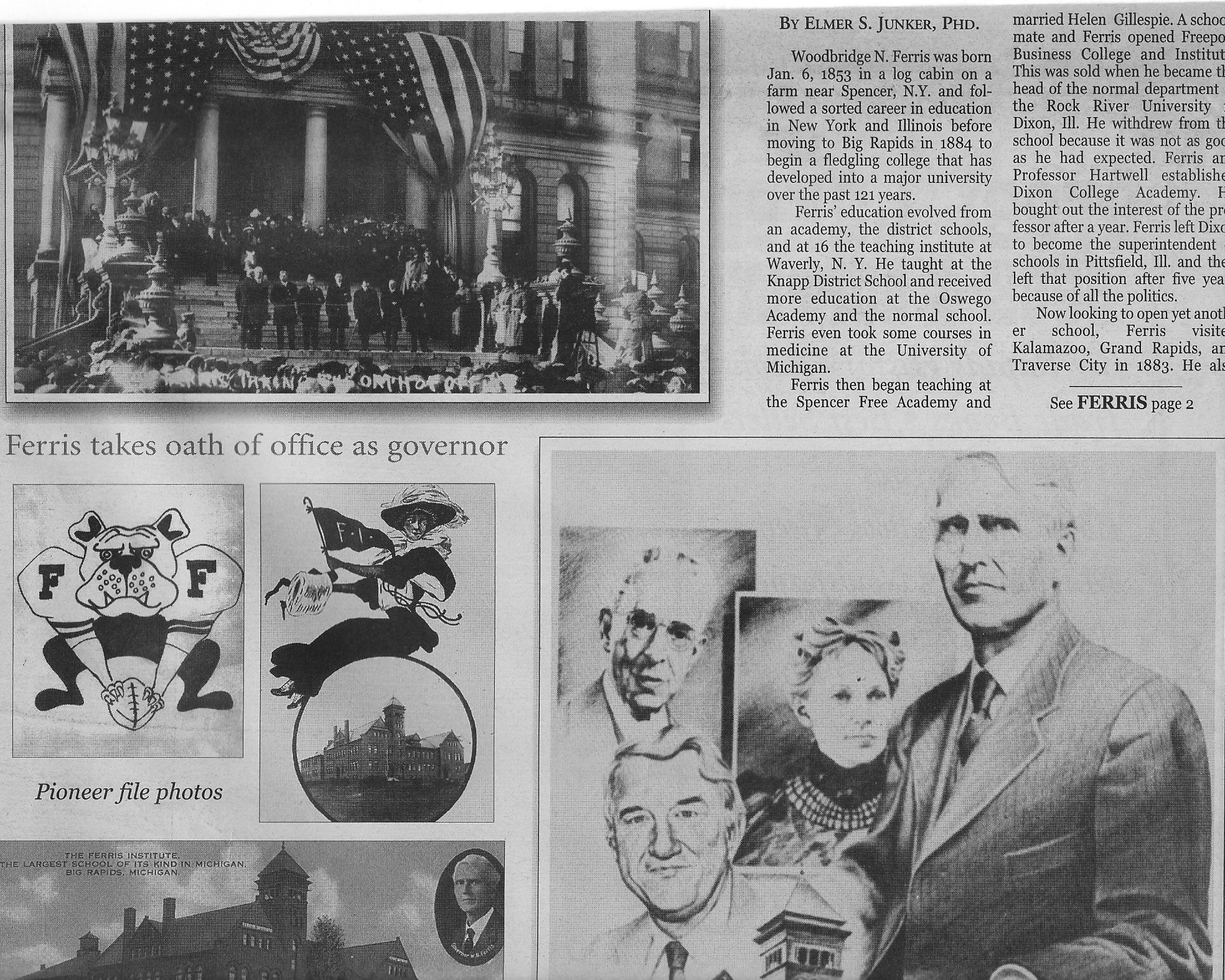
FROM A SMALL INDUSTRIAL SCHOOL TO A NATIONALLY KNOWN UNIVERSITY
By Elmer S. Junker, PHD
Woodbridge N. Ferris was born Jan. 6, 1853 in a log cabin on a farm near Spencer, N.Y. and followed a sorted career in education in New York and Illinois before moving to Big Rapids in 1884 to begin aw fledgling college that has developed into a major university over the past 121 years.
Ferris' education evolved from an academy, the district schools, and at 16 the teaching institute at Waverly, N.Y. He taught at the Knapp District School and received more education at the Oswego Academy and the normal school. Ferris even took some courses in medicine at the University of Michigan.
Ferris then began teaching at the Spencer Free Academy and married Helen Gillespie. A schoolmate and Ferris opened Freeport Business College and Institute. This was sold when he became the head of the normal department of the Rock River University in Dixon, ILL. He withfrew from the school because ir waas not as good as he expected. Ferris and Professor Hartwell established Dixon College Academy. He brought out the interest of the professor after a year. Ferris left Dixon to becometo begin the superintendent of schools in Pittsfield, Ill. and then left that position after five years because of all the politics.
Now looking to open yet another school, Ferris visited Kalamazoo, Grand Rapids, and Traverse City in 1883. He also considered Fargo, N.D., Duluth, Minn., and Big Rapids before deciding on the least populace of them all.
FERRIS INDUSTRIAL SCHOOL
The school in Big Rapids was established when he took over a class of prospective teachers from a Mr. Malone. In September of 1884 he opened the Big Rapids Industrial School, later named Ferris Industrial School. He and Mrs. Ferris taught the 15 students.
Later after studying his enrollment and finding that the majority of his students came from the southern part of the state, he decided that if he had started the school in Lansing, Pontiac, Battle Creek, or Jackson, the Ferris Institute would have been born 20 years sooner.
The courses Ferris offered grew out of demand. Pharmacy came about6 because a student wanted instruction so that he could pass the state board for pharmacy. Now Ferris provides about half of the pharmacy graduates employed in Michigan.
Ferris at times was fighting with the citizens of Big Rapids as he wanted them to help pay for the school. As early as 1891 he was writing that he would need a new home for the school the next year, Ferris even discussed moving the school to Ludington, noting they would give himland for his school, land for a house, $7,550 to be raised by public sucription, and the school was to becomehis after ten years of operation. The proposal fell through when it was determined that you could not use public money for private purposes. Later he said that the school needed to do one of two things, either it would cease to exist in 1892 or move into a $100,000 building. He had $5,000 in the bank at that time and decided to stay.
Ferris also leased some space in Muskegon and opened a business college that did not compete against the existing school. An announcement was made to this effect on Oct. 1, 1888. Later he planned to add a night school. But some problems with the school and its administration led to its sale. The school still exists.
Some other activities of Ferris included the school's exhibit for the 1897 World's Fair; management and membership in the National Teachers Bureau of Michigan and his partnership in an agency for typewriters and typewriter supplies.
Ferris was elected Governor of Michigan in 1912 and served four years before returning to the school. In 1922, he was elected as a U.S. Senator and served until his death March 23, 1928.
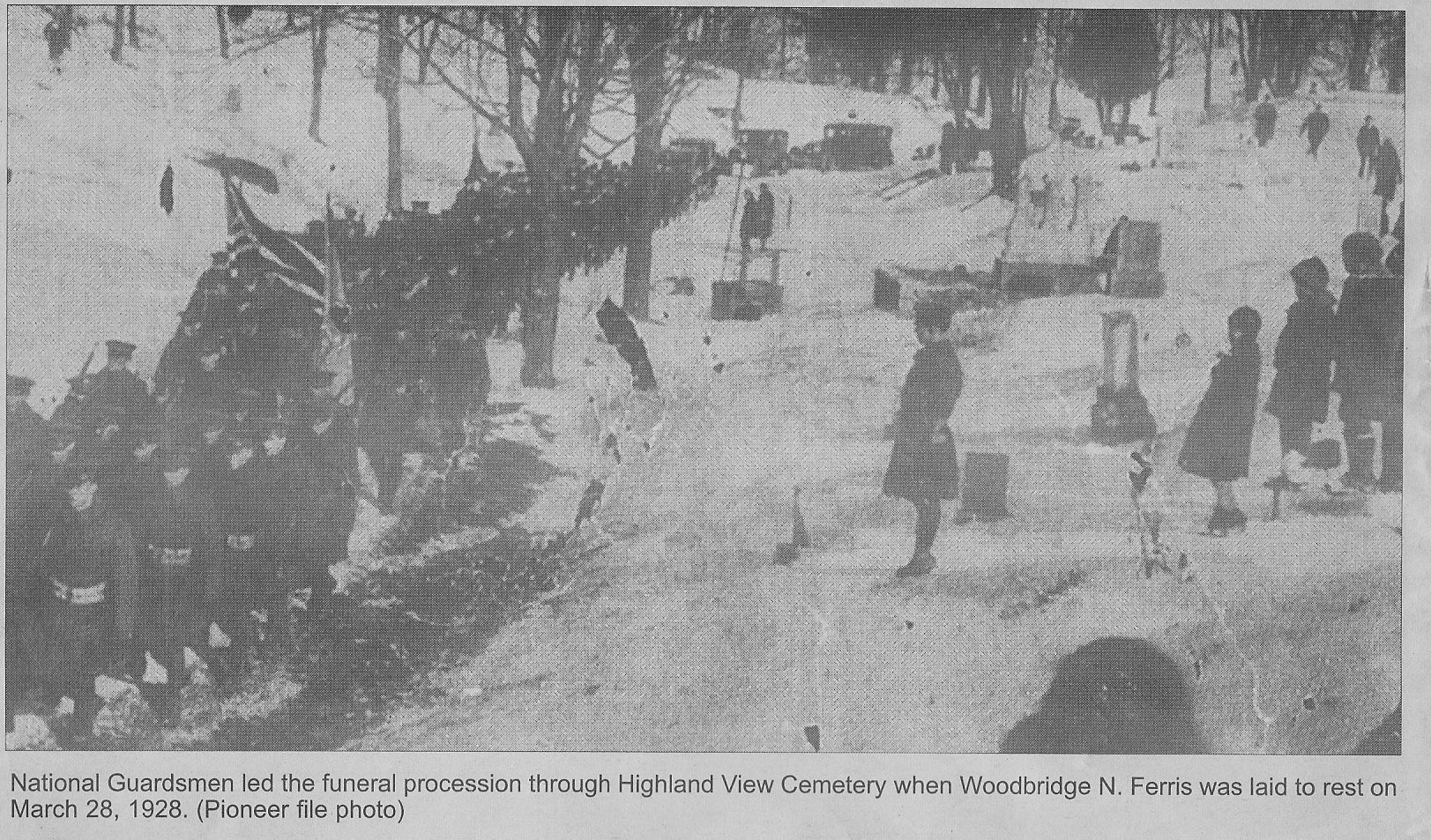
AFTER THE DEATH OF FERRIS
Gerrit Masselink became president of Ferris Institute upon the death of Ferris but served only one year before passing away. Masselink and B.S. Travis had arranged to buy the school in 1922 when Ferris was elected to his Senate seat.
In 1923 the stockholders incorporated the school as a non-profit organization and the Ferris Institute Benefit Organization was started. Masselink's death and the depression caused the pledges to go unpaid but the Alumni building was finished anyway. To help out the school another non-profit orgwanization named the Board of Incorporators was started by 40 businessmen.
Many people felt that Ferris be a state college and a bill was passed that proposed that the state buy the school for $70,000 and put it under the control of Central Michigan. The governor was originally in favor of the bill, but later vetoed it.
The Board of Incorporators then suggested that the school, then worth $1 million, be given to the state. A bill to that effect was signed by Gov. G. Mennen Williams on May 17, 1949 with an effective date of July 1, 1950.
FERRIS DESTROYED BY FIRE
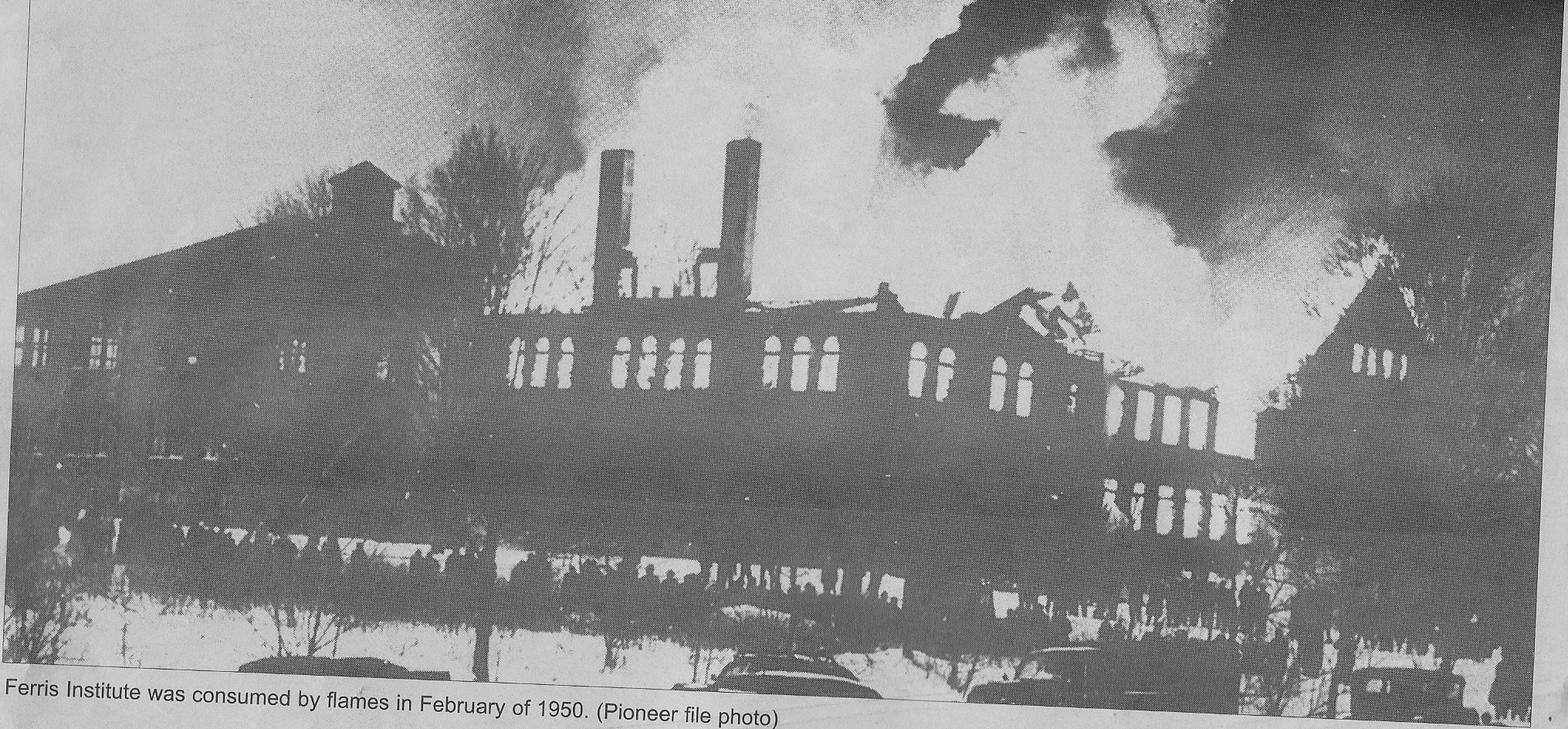
But, on Feb. 21, 1950 the4 school was nearly destroyed by fire. Some barracks that had been used for housing was all that remained and one week after the blaze classes resumed in those converted buildings. Townspeople and others came forward with money and books for the school and its library. Later at a faculty week activity, one college administrator actually claimed that was the establishment of the Michigan College of Optometry, despite the opposition of Gov. William G. Milliken.
The professional Golf Management Program also got underway in 1975, just four years into Ewigleben's tenure. Under this innovative program students had to meet requirements in the classroom and in the golf course which led to jobs as graduates teaching golf, managing club tournaments, ordering supplies and running golf shops and serving as golf pros.
Ferris also purchased and expanded a building now known as the Racket and Fitness Building in 1980 and then began the Professional Tennis Management Program in 1986 - a program very similar to the golf management curriculum.
FERRIS BECOMES A UNIVERSITY
Then in 1987, under the Presidency of William Wenrich, Ferris and some other colleges in the state received support in the Michigan Legislature to become universities and then state senator Joanne Emmons of Big Rapids was instrumental in the drive to change Ferris from a college to a university.
The most recent noteworthy accomplishment of the university was the merger under the realm of Former FSU president William Sederburg with Kendall School of Design in Grand Rappids, with FSU offering classes at the Grand Rapids facility and continued expansion of the combined campus planned.
FSU is now operating in the third century of existance since its opening in September of 1884 in a downtown Big Rapids business building at the center of Elm and Maple.
Now FSU operates from a campus that dominates the south side of the 150 year old city as it continues to reach out in the mold of its founder, W.N. Ferriswith ionnovstive ideas for teaching students the skills they will need to compete for jobs in an ever-changing world.
Return to Mecosta sesquicentennial Page
Return to Home Page





